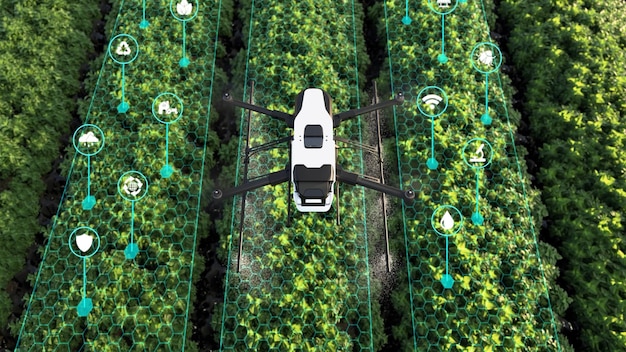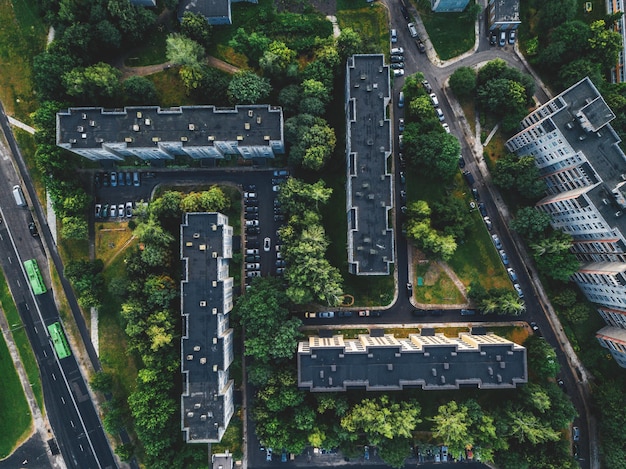Autonomous Vehicles: Reshaping the Future of US Cities

The future of transportation in US cities is poised for a dramatic transformation as autonomous vehicles promise to revolutionize urban mobility, potentially easing congestion, enhancing safety, and reshaping city infrastructure.
The advent of the future of transportation: how autonomous vehicles will reshape US cities isn’t just a technological leap; it’s a potential paradigm shift affecting every facet of urban life, from commute times to city planning.
Autonomous Vehicles: A Glimpse into Tomorrow’s Urban Mobility
The integration of autonomous vehicles (AVs) is set to redefine how we navigate and interact with our cities. These self-driving vehicles promise a future where transportation is safer, more efficient, and more accessible.
As technology advances, the anticipation surrounding AVs grows, promising to revolutionize urban landscapes. How exactly will these changes manifest?
Enhanced Safety and Reduced Accidents
One of the most significant potential impacts of AVs is improved road safety. By eliminating human error, autonomous vehicles can drastically reduce the number of accidents.
The promise of fewer accidents holds immense potential for saving lives and reducing injuries. But achieving this requires overcoming technological and regulatory hurdles.
- AVs use sensors and software to make real-time decisions, minimizing risks from speeding, distracted driving, and drunk driving.
- Studies suggest a widespread adoption of AVs could reduce traffic accidents by up to 90%.
- Advanced driving assistance systems (ADAS) are already paving the way by incorporating features like automatic emergency braking and lane departure warnings.

In conclusion, autonomous vehicles may save lives and greatly reduce injuries associated with car accidents. However, it is important that developers and regulatory services improve the technology and overcome the challenges ahead of us.
The Promise of Increased Efficiency and Reduced Congestion
Autonomous vehicles offer the potential to optimize traffic flow and reduce congestion in urban areas. This increased efficiency promises to save time and fuel, benefiting both individuals and the environment.
Will autonomous vehicles be the solution for traffic congestion? The technology is still new and has several challenges it still needs to meet.
Optimizing Traffic Flow with AVs
The ability of AVs to communicate with each other and adapt to changing traffic conditions can significantly improve overall traffic flow.
Through data sharing and coordinated actions, AVs can create a smoother, more predictable transportation system, minimizing bottlenecks and optimizing routes.
- AVs can maintain consistent speeds and optimal following distances, reducing the “phantom traffic jams” caused by sudden braking and acceleration.
- Cooperative adaptive cruise control (CACC) allows AVs to adjust collaboratively to traffic conditions, maximizing throughput and minimizing delays.
- Real-time data analysis and predictive modeling can enable AVs to anticipate congestion and dynamically re-route, further optimizing traffic flow.
In short, AVs have the potential to improve efficiency and reduce congestion. This will save resources that may otherwise be wasted.
Rethinking Urban Planning and Infrastructure
The widespread adoption of autonomous vehicles could lead to a fundamental rethinking of urban planning and infrastructure development. As transportation patterns change, cities may need to adapt their physical landscapes and public spaces.
The impact of autonomous vehicles on urban planning is vast and complex. How must cities adapt to accommodate this technology?

- Parking demands may decrease: As AVs can drop off passengers and then park outside the city center or return home, the need for extensive parking infrastructure in urban cores may diminish.
- Reallocation of space: Freed-up parking spaces can be repurposed for green spaces, pedestrian zones, or public amenities, improving the quality of urban life.
- Infrastructure investments: Cities may need to invest in infrastructure that supports AVs, such as dedicated lanes, charging stations, and advanced communication networks.
In conclusion, urban areas need to adapt around AVs and take advantage of the real estate and infrastructural opportunities they present.
Accessibility and Inclusion for All
Autonomous vehicles have the potential to improve mobility for individuals who currently face transportation challenges, such as the elderly, people with disabilities, and those living in underserved areas. This could lead to greater independence and access to opportunities.
Transportation remains a barrier to opportunities and quality of life for those who have disabilities. Autonomous vehicles may be the answer to helping those in need.
Breaking Down Mobility Barriers
AVs can provide door-to-door transportation services, enabling individuals with mobility limitations to travel independently.
With autonomous vehicles, users can overcome barriers and have the freedom to live life to the fullest.
- AVs can be equipped with features such as voice control, wheelchair accessibility, and customized interfaces to accommodate diverse user needs.
- On-demand AV services can connect remote communities and underserved areas to essential services such as healthcare, education, and employment.
Access to reliable transportation can improve the quality of life for those most in need. It will allow them to have greater freedom and access to opportunities.
Environmental Impact and Sustainability Initiatives
Autonomous vehicles may offer environmental benefits, such as reduced emissions and improved fuel efficiency. But realizing these benefits will require careful planning and policy decisions.
The push for a greener tomorrow requires a greener transportation system. Can AVs address this need?
Reducing Emissions and Promoting Green Transportation
AVs can be programmed to optimize fuel consumption and minimize emissions, contributing to cleaner air and a smaller carbon footprint.
As a rule, people won’t prioritize environmental goals over convenience. But if people can enjoy more fuel efficiency without sacrificing anything, they are more likely to go green.
- AVs can utilize eco-routing algorithms to select the most fuel-efficient routes, avoiding congested areas and optimizing speeds.
- Electric AVs powered by renewable energy sources can further reduce emissions and reliance on fossil fuels.
- AVs can facilitate the adoption of shared mobility services, reducing the number of vehicles on the road and promoting sustainable transportation options.
In brief, the environmental impact of autonomous vehicles will likely be a net benefit. The improved fuel efficiency and the reduced reliance on fossil fuels are hard to ignore.
Navigating the Challenges and Ethical Considerations
The widespread deployment of autonomous vehicles faces several challenges, including technological hurdles, regulatory uncertainties, and ethical concerns. Addressing these issues is crucial to ensuring a safe and equitable transition to a future with AVs.
While autonomous vehicles hold great promise, they present challenges and raise ethical concerns. What are the challenges we need to overcome?
Addressing Technological Challenges and Ensuring Safety
AVs must be able to navigate complex and unpredictable real-world conditions, including inclement weather, construction zones, and unexpected obstacles. Overcoming these challenges requires continuous innovation and rigorous testing.
Innovation and rigorous testing should be two key aspects of developing this technology. Addressing the safety concerns regarding edge cases of AV operation is paramount.
- Sensors and software need to be robust and reliable, capable of accurately perceiving the environment and making safe driving decisions.
- Redundancy and fail-safe mechanisms are essential to ensure AVs can safely handle unexpected situations and system failures.
- Continuous monitoring and data analysis can help identify potential safety issues and improve AV performance over time.
In the end, technological challenges and ethical concerns need to be addressed to ensure a successful, safe transition to a future with AVs.
| Key Point | Brief Description |
|---|---|
| 🚗 Safety Improvements | Autonomous vehicles promise to reduce accidents by eliminating human error. |
| 🚦 Congestion Reduction | AVs can optimize traffic flow, reducing congestion and fuel consumption. |
| 🏙️ Urban Planning | The need for parking will decrease, allowing for redevelopment of public spaces. |
| ♿ Accessibility | Improved transportation opportunities for the elderly, people with disabilities, and those in underserved areas. |
Frequently Asked Questions
▼
Autonomous vehicles have the potential to greatly reduce traffic accidents by eliminating human error. However, the safety of AVs depends on their ability to handle complex and unpredictable real-world scenarios.
▼
Ethical dilemmas arise when AVs must make decisions in unavoidable accident scenarios, such as choosing between minimizing harm to passengers or pedestrians. AI and developers must take these into account.
▼
Autonomous vehicles may reduce pollution by optimizing fuel consumption and promoting efficient routes. The widespread adoption of electric AVs, powered by renewable energy, will reduce emissions even more.
▼
Cities may need to invest in infrastructure that supports AVs, such as dedicated lanes, charging stations, and advanced communication networks. This can dramatically improve the quality of life in urban environments.
▼
AVs can be customized with features such as voice control, wheelchair accessibility, and customized interfaces. These can accommodate diverse user needs, allowing people who have limitations to their mobility to enjoy life.
Conclusion
The future of transportation is on the brink of a revolutionary transformation thanks to autonomous vehicles. By improving urban mobility, they present great opportunities for improving safety, enhancing efficiency, and promoting sustainability. Navigating the challenges and ethical considerations will be essential for harnessing the full potential of AVs and building a better future for all.





